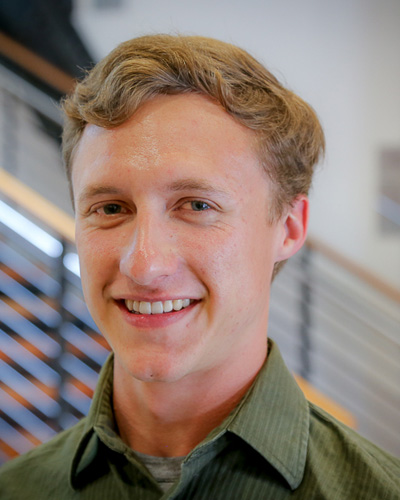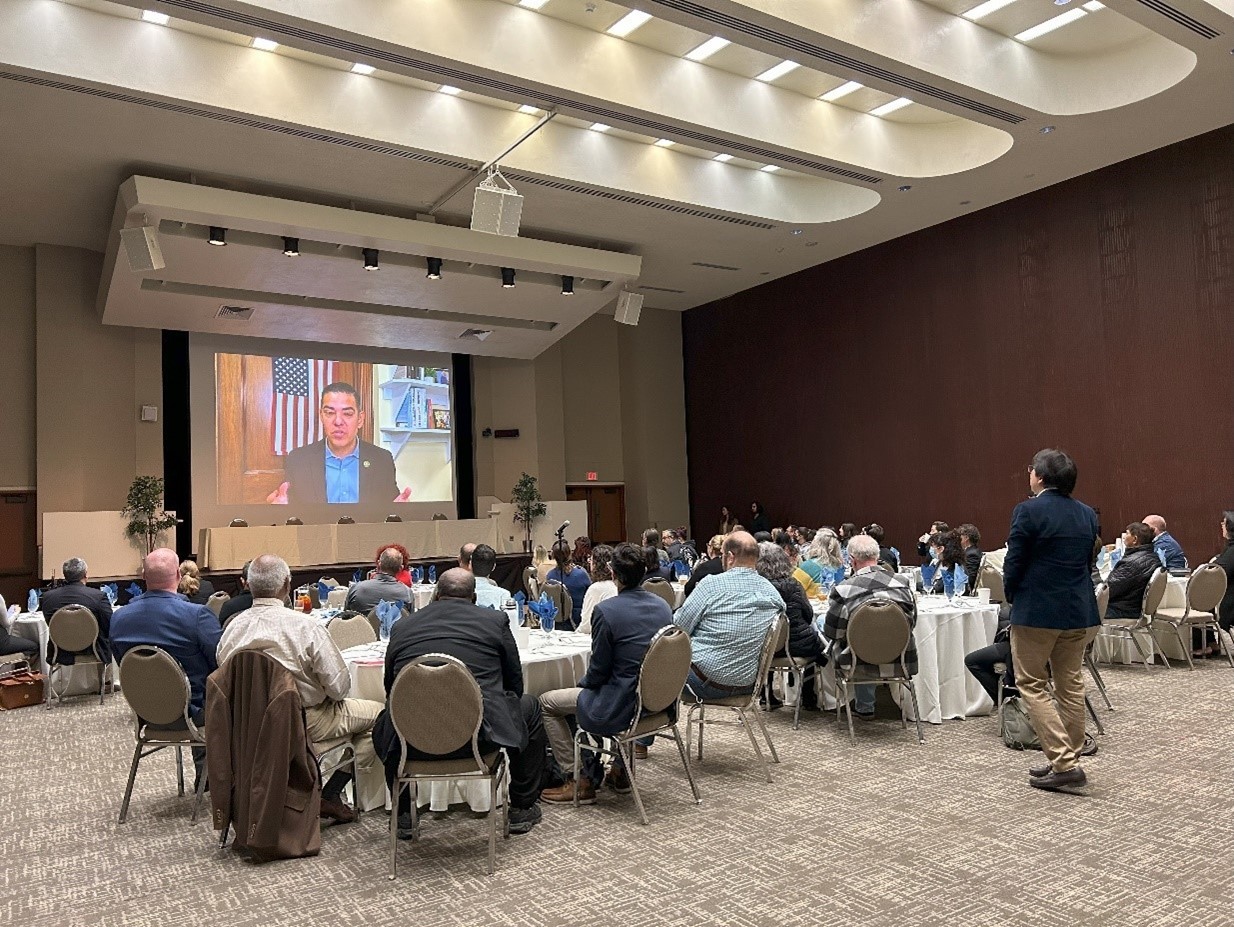News | PSR Webinar Brings Transportation Practice to Campus
Stop the VideoNews

PSR Webinar Brings Transportation Practice to Campus
Wednesday, March 31, 2021
by Micha Kempe, USC Class of 2019
On Thursday, March 4, 2021, the Pacific Southwest Region University Transportation Research Center (PSR), the Institute of Transportation Engineers Northern Arizona University Student Chapter (ITE NAU), and the Arizona Laboratory for Applied Transportation Research (AZTrans) hosted a virtual webinar featuring Ironside Engineering & Development, Inc. (IE&D) Transportation Manager Dr. Zach Barlow sharing an inside look into real-world transportation engineering projects. Dr. Zach Barlow received his Ph.D. from Oregon State University and is a member and the Communications Coordinator for the Transportation Research Board's (TRB) Committee on Transportation History. He continues to pursue research interests at IE&D related to rural transportation safety as well as transportation history.

Dr. Zachary Barlow, Project Manager at IE&D
In the webinar, Dr. Barlow introduced the research of Dr. Hisham Jashami, research associate at Michigan State University, who investigates driver comprehension and visual attention of flashing yellow arrow displays for permissive right turns. Across the United States, he explained, flashing yellow left-turn signals are increasingly common in high traffic locations; we are seeing protected flashing yellow right turn movements as well. Over the last ten-years, collisions at right-turn intersections have been increasing in the state of Oregon, he noted. The motivation for this research is based on the discovery that while right turns are generally the safest turns due to not having many conflicts with other vehicles, there are still conflicts with bicyclists and pedestrians who aren’t visible to people driving on the road. This conflict point is often overlooked by drivers. To test the right turn movements and navigations they experimented utilizing the Oregon Department of Transportation (DOT) Driving simulator. Many factors were focused on including observed driver behavior. Upon research, People don’t understand the steady circular display when yielding to pedestrians.
Flashing Yellow has become more common in the Left turns. The solution could be flashing yellow on right turns on the busy intersections. This can greatly improve pedestrian safety at signalized intersections with high volumes of permissive right turns from an exclusive right turn only lanes by using the flashing yellow display instead of the steady circular green display.
The webinar was particularly interesting to the Los Angeles region attendees as they have experienced these flashing yellow turn signals in Los Angeles, CA, and noted that the City of Beverly Hills recently installed left-turn flashing yellow signs at the intersection of Olympic Boulevard and Beverly Drive. Below is a photo of that intersection shared by a student attendee:

Northern Arizona University (NAU) Master of Science in Civil Engineering student Katherine Riffle remarked, “Dr. Zach Barlow's presentation about Flashing Yellow Arrows for Right Turns demonstrated how small changes and improvements to a traffic signal system can make a big difference to the safety of crossing pedestrians. The benefits to pedestrian safety through this study show how updating the Manual on Uniform Traffic Control Devices (MUTCD) and other engineering guiding manuals can make intersections safer for all road users.” Riffle is a Graduate Research Assistant with NAU Professors Edward Smaglik and Brendan Russo and is serving her second year as president of the ITE NAU Student Chapter.
About the Author:
Micha Kempe earned a Bachelor of Science in Real Estate Development with a minor in Business Administration from the University of Southern California. Kempe founded the USC Mobility Lab, a collaboration with METRANS and USC Transportation focusing on analyzing mobility data and solving transportation problems, and received the Order of the Laurel and the Palm upon graduation, the highest honor accorded by the university to less than one percent of undergraduates completing their programs of study, recognizing leadership that touches multiple facets of university life.
News Archive
- December (1)
- November (6)
- October (4)
- September (2)
- August (3)
- July (4)
- June (3)
- May (7)
- April (8)
- March (11)
- February (8)
- January (7)
- December (7)
- November (8)
- October (11)
- September (11)
- August (4)
- July (10)
- June (9)
- May (2)
- April (12)
- March (8)
- February (7)
- January (11)
- December (11)
- November (5)
- October (16)
- September (7)
- August (5)
- July (13)
- June (5)
- May (5)
- April (7)
- March (5)
- February (3)
- January (4)
- December (4)
- November (5)
- October (5)
- September (4)
- August (4)
- July (6)
- June (8)
- May (4)
- April (6)
- March (6)
- February (7)
- January (7)
- December (8)
- November (8)
- October (8)
- September (15)
- August (5)
- July (6)
- June (7)
- May (5)
- April (8)
- March (7)
- February (10)
- January (12)















